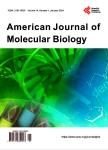The full length <i>PtSRP</i>(<i>Pisolithus tinctorius</i>symbiosis related protein) fungal mRNA encodes a potential marker of ectomycorrhiza formation
The full length <i>PtSRP</i>(<i>Pisolithus tinctorius</i>symbiosis related protein) fungal mRNA encodes a potential marker of ectomycorrhiza formation作者机构:Departamento de Micologia Universidade Federal de Pernambuco Recife Brazil Laboratório de Imunologia Celular e Molecular Centro de Pesquisas René Rachou Belo Horizonte Brazil
出 版 物:《American Journal of Molecular Biology》 (美国分子生物学期刊(英文))
年 卷 期:2012年第2卷第3期
页 面:258-264页
学科分类:1002[医学-临床医学] 100214[医学-肿瘤学] 10[医学]
主 题:Ectomycorrhiza Symbiosis Related Genes/Proteins RACE EST
摘 要:The Pisolithus tinctorius symbiosis related protein expressed sequence tag (EST PtSRP) was previously identified in the first hours of the interaction between the fungus Pisolithus tinctorius and sweet chestnut Castanea sativa, and partially characterized as a fungal marker gene of ectomycorrhizal symbiosis formation. We used the 5’ rapid amplification of cDNA ends (RACE) to obtain the PtSRP mRNA 5’ region, and together with our previously reported 3’ mRNA region, the full mRNA sequence was assembled by use of bioinformatics tools and deposited to GenBank (Accession: GU733439). The full-length mRNA sequence (636 bp) revealed the locations of the 5’ and 3’ untranslated regions (UTRs) and contained the Kozak sequence (ccc aag ATG A) in the 5’ UTR. The in silico translated PtSRP open reading frame (ORF) codes for a 127 amino acid protein and contained four putative post-translational modification sites (two N-glycosylation and two phosphorylation). The protein secondary structure is postulated to be composed of one N-terminal hydrophobic transmembrane alpha helix and at least six hydrophilic beta-strands spread across the protein. Sub-cellular localization prediction suggests that the protein is involved in cellular secretory pathway, supported by the presence of a cleavage site motif close to the membrane anchor. The data presented herein indicate the role of PtSRP as a fungal membrane secreted protein involved in early stages of ectomycorrhizal formation, with application as a possible marker for nascent ectomy-corrhiza fungal development.



